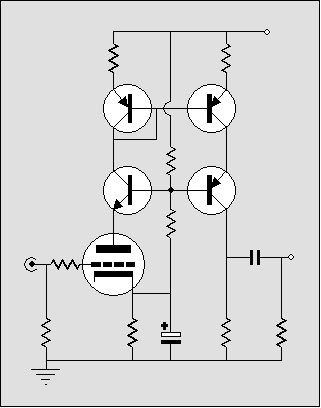The core problem is that one tube inside a modern mike housing is HOT; two tubes (or a twin-tube) is too-hot. One tube is all you need to mate with dynamic mike preamps.
The Miller is not killer. It reduces output, but condensers have tons of output. As everybody knows (I assumed), or learned in that paper that was linked here recently, a condenser mike is square-law so has distortion, which is reduced if you throw a significant capacitance on it.
You will also have a noise problem using the self-bias resistor to couple the CF to the GG stage. The CF will run at gain much less than unity, and the total noise appears to be double that of one tube. Yes, the high output level of a condenser makes that less critical, but you can't get careless.
The low/medium-Mu lo-noise triode with step-down transformer seems a reasonable plan, confirmed by about 567 commercial designs.
Tube mikes will be lowest-noise with ~~200Meg grid resistor. A little higher for special mike tubes, a little lower for common tubes. Use 100Meg. Save the 1G for FETs.
If plate resistor and supply voltage conspire so that the plate dissipation can NOT be approached, don't worry too much about violating the grid-leak rating. If plate resistor is much higher than plate resistANCE, and Mu is fairly high, the tube tends to find its own bias point. You may have to burn-in the tube, and weed-out gassers, but it should work.




































